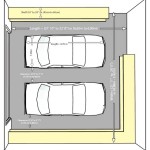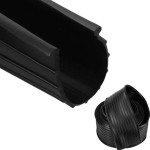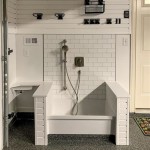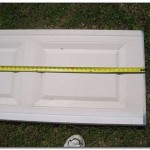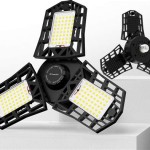Automatic Garage Door Opener and Installation: A Comprehensive Overview
The integration of automatic garage door openers has revolutionized home convenience and security. No longer is it necessary to manually lift and lower heavy garage doors, particularly in inclement weather. Instead, a simple press of a button activates a motorized system, offering a seamless and efficient means of accessing a garage. This article provides a thorough examination of automatic garage door openers, encompassing their types, key features, installation considerations, and the importance of professional assistance.
The core function of an automatic garage door opener is to translate an electrical signal into mechanical force capable of raising and lowering a garage door. This process involves a motor, a drive mechanism, a control system, and safety features. The motor provides the necessary power, while the drive mechanism converts the motor's rotational energy into linear motion. The control system, typically consisting of a remote control and a receiver, allows for remote operation of the opener. Crucially, safety features are integrated to prevent accidents and ensure the reliable performance of the system.
Types of Automatic Garage Door Openers
Automatic garage door openers are categorized based on their drive mechanisms, each offering distinct advantages and disadvantages concerning noise levels, power, speed, and maintenance requirements. The most common types include chain drive, belt drive, screw drive, and direct drive openers.
Chain Drive Openers: Chain drive openers are the most prevalent and typically the most affordable type. They employ a metal chain to connect the motor to the trolley, which moves along a track to open and close the door. While robust and reliable, chain drive openers are generally the noisiest option due to the metallic friction involved in the chain's movement. Their straightforward design makes them relatively easy to maintain, but the chain may require periodic lubrication and adjustment to ensure optimal performance.
Belt Drive Openers: Belt drive openers utilize a reinforced rubber or polyurethane belt instead of a chain. This substitution significantly reduces noise levels, making them a preferred choice for garages attached to living spaces. Although generally more expensive than chain drive openers, belt drive systems offer a smoother and quieter operation. Furthermore, they tend to require less maintenance due to the reduced wear and tear on the belt compared to a chain. The greater initial investment is often justified by the enhanced comfort and longevity of the system.
Screw Drive Openers: Screw drive openers employ a threaded steel rod (screw) to move the trolley along the track. These openers are known for their power and relatively simple design, requiring minimal maintenance. However, they can be slower than chain or belt drive openers and may produce more noise than belt drive systems. Screw drive openers are particularly well-suited for heavier garage doors and are less susceptible to wear and tear in extreme temperatures.
Direct Drive Openers: Direct drive openers represent a more modern and sophisticated design. In this system, the motor is mounted directly to the door's trolley, eliminating the need for a chain, belt, or screw. This configuration results in exceptionally quiet operation, minimal vibrations, and reduced maintenance. Direct drive openers typically come with advanced features, such as battery backup and smartphone connectivity. However, they are often the most expensive option and may require professional installation.
Key Features and Considerations
When selecting an automatic garage door opener, several key features and considerations should be taken into account to ensure the chosen system meets the specific needs and requirements of the user. These features include horsepower rating, safety sensors, security features, battery backup, and smart home integration.
Horsepower Rating: The horsepower (HP) rating of the motor determines the opener's ability to lift and lower the garage door. A higher HP rating is generally recommended for heavier doors, such as those made of solid wood or insulated materials. A 1/2 HP motor is typically sufficient for standard residential garage doors, while a 3/4 HP motor is recommended for heavier doors or double-car garages. Selecting an appropriate HP rating ensures the opener operates efficiently and reliably without straining the motor.
Safety Sensors: Safety sensors are a critical safety feature that prevents the door from closing if an obstruction is detected in its path. These sensors, typically located near the bottom of the door opening, emit an invisible beam of light. If the beam is interrupted, the door automatically reverses direction, preventing potential injuries or property damage. Safety sensors are mandatory on all modern garage door openers and should be tested regularly to ensure proper functionality.
Security Features: Automatic garage door openers are equipped with security features to prevent unauthorized access to the garage. Rolling code technology is a common security mechanism that changes the access code each time the remote control is used, preventing code theft and replay attacks. Some openers also offer features such as vacation mode, which disables the remote control functionality for added security during extended absences. Strong encryption protocols are essential to protect against hacking and ensure the secure operation of the garage door.
Battery Backup: Battery backup provides power to the opener in the event of a power outage, allowing the garage door to be opened and closed even when the electricity is out. This feature is particularly valuable in areas prone to power outages or for individuals who rely on their garage as the primary access point to their home. Battery backup systems typically provide enough power for several opening and closing cycles and are automatically recharged when power is restored.
Smart Home Integration: Many modern automatic garage door openers offer smart home integration capabilities, allowing users to control and monitor their garage door from their smartphones or other connected devices. This feature enables remote operation of the door, real-time notifications when the door is opened or closed, and integration with other smart home systems. Smart home integration provides added convenience, security, and control over the garage door.
Automatic Garage Door Opener Installation Considerations
Proper installation is paramount to ensuring the reliable and safe operation of an automatic garage door opener. While some homeowners may attempt a DIY installation, it is strongly recommended to enlist the services of a qualified professional. The installation process involves several critical steps, including preparing the garage door, mounting the opener unit, installing the track and trolley, connecting the electrical wiring, and programming the remote controls. Improper installation can lead to malfunctions, safety hazards, and voiding of the manufacturer's warranty.
Pre-Installation Assessment: Before commencing the installation, a thorough assessment of the existing garage door and garage structure is necessary. This assessment includes verifying the door's balance, inspecting the tracks and rollers for damage or wear, and ensuring the structural integrity of the garage ceiling or support beams. Any necessary repairs or reinforcements should be completed before installing the opener.
Mounting the Opener Unit: The opener unit should be securely mounted to the garage ceiling or support beams using appropriate hardware. The mounting location should be chosen to provide adequate clearance for the door's operation and to minimize vibrations. The unit should be level and properly aligned to ensure smooth and reliable operation. Incorrect mounting can cause the opener to malfunction or damage the door.
Installing the Track and Trolley: The track, which guides the trolley along the opening path, must be installed securely and aligned properly. The trolley, which connects the opener to the garage door, should move smoothly along the track without binding or resistance. The track and trolley should be lubricated to reduce friction and ensure optimal performance. Improper installation of the track and trolley can cause the door to jam or become misaligned.
Electrical Wiring and Connections: Connecting the electrical wiring to the opener unit requires careful attention to safety and adherence to local electrical codes. The opener should be connected to a dedicated circuit breaker to prevent overloading the electrical system. All wiring connections should be secure and properly insulated to prevent electrical shocks or short circuits. If unsure about any aspect of the electrical wiring, it is imperative to consult a qualified electrician.
Programming and Testing: After the mechanical and electrical connections are complete, the remote controls and any other accessories must be programmed according to the manufacturer's instructions. The safety sensors should be tested to ensure they are functioning correctly. The door should be operated several times to verify smooth and reliable operation. Adjustments may be necessary to fine-tune the door's opening and closing limits and to ensure proper safety sensor functionality.
The Importance of Professional Installation
While DIY installation may seem appealing from a cost-saving perspective, it is crucial to recognize the potential risks and complexities involved. Engaging a professional installer offers several significant advantages, including expertise, experience, safety, warranty protection, and peace of mind.
Expertise and Experience: Professional installers possess the knowledge, skills, and experience necessary to install automatic garage door openers safely and efficiently. They are familiar with the various opener types, installation techniques, and safety regulations. Their expertise ensures that the opener is installed correctly and that all safety features are functioning properly.
Safety: Installing a garage door opener involves working with heavy equipment, electrical wiring, and potentially hazardous conditions. Professional installers are trained to handle these risks safely and to take precautions to prevent accidents or injuries. They are equipped with the necessary tools and safety equipment to complete the installation safely and efficiently.
Warranty Protection: Many garage door opener manufacturers require professional installation to maintain the warranty on the opener unit. DIY installation may void the warranty, leaving the homeowner responsible for any repair or replacement costs. Professional installers are typically certified by the manufacturer and can provide documentation to validate the warranty.
Peace of Mind: Hiring a professional installer provides peace of mind knowing that the garage door opener has been installed correctly and safely. The installer will ensure that the opener is functioning properly and that all safety features are operating as intended. This ensures the long-term reliability and safety of the system.
In conclusion, automatic garage door openers offer a significant enhancement to home convenience and security. Selecting the appropriate opener type, considering key features, and ensuring professional installation are crucial to maximizing the benefits of this technology.

Garage Door Openers Choose The Right Type Features

An Overview Of Garage Door Opener Options

How To Install A Garage Door Opener

Selecting A New Automatic Garage Door Opener Harry Jrs Doors

How Do Garage Door Openers Work The Basics

Re Attach Your Garage Door Opener

Diy Automatic Garage Door Opener Tilt Or Sectional

How To Choose The Right Electric Garage Door Opener For Your Needs Access Doors Corporate

Automatic Garage Door Myths

Roll Up Automatic Garage Door Opener

